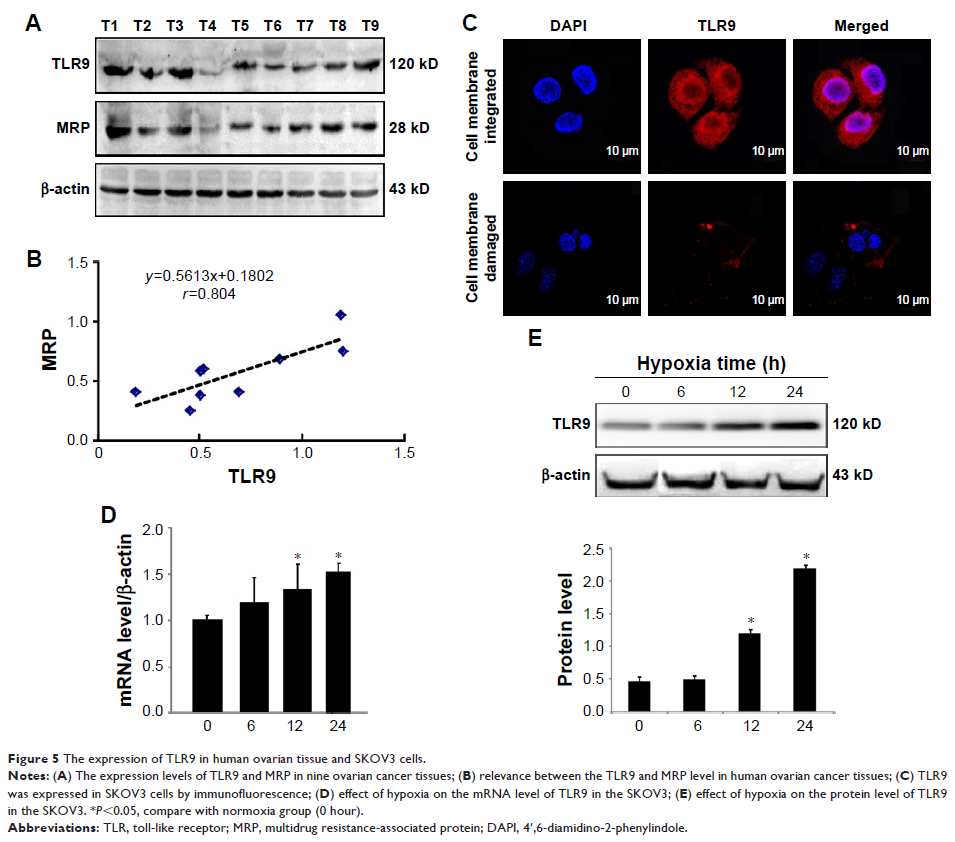9 0 5 7 8
论文已发表
注册即可获取德孚的最新动态
IF 收录期刊
- 2.6 Breast Cancer (Dove Med Press)
- 3.9 Clin Epidemiol
- 3.3 Cancer Manag Res
- 3.9 Infect Drug Resist
- 3.6 Clin Interv Aging
- 4.8 Drug Des Dev Ther
- 2.8 Int J Chronic Obstr
- 8.0 Int J Nanomed
- 2.3 Int J Women's Health
- 3.2 Neuropsych Dis Treat
- 4.0 OncoTargets Ther
- 2.2 Patient Prefer Adher
- 2.8 Ther Clin Risk Manag
- 2.7 J Pain Res
- 3.3 Diabet Metab Synd Ob
- 4.3 Psychol Res Behav Ma
- 3.4 Nat Sci Sleep
- 1.9 Pharmgenomics Pers Med
- 3.5 Risk Manag Healthc Policy
- 4.5 J Inflamm Res
- 2.3 Int J Gen Med
- 4.1 J Hepatocell Carcinoma
- 3.2 J Asthma Allergy
- 2.3 Clin Cosmet Investig Dermatol
- 3.3 J Multidiscip Healthc

FPR 和 TLR9 对缺氧诱导的卵巢癌细胞化学耐药的贡献
Authors Cai Y, Huang J, Xing H, Li B, Li L, Wang X, Peng D, Chen J
Received 8 October 2018
Accepted for publication 4 December 2018
Published 28 December 2018 Volume 2019:12 Pages 291—301
DOI https://doi.org/10.2147/OTT.S190118
Checked for plagiarism Yes
Review by Single-blind
Peer reviewers approved by Dr Amy Norman
Peer reviewer comments 2
Editor who approved publication: Dr William Cho
Background/purpose: The aim
of this study was to investigate the role and mechanisms of the formyl peptide
receptor (FPR) and the toll-like receptor 9 (TLR9) in hypoxia-induced
chemoresistance of human ovarian cancer cells.
Materials and methods: SKOV3
cells were exposed to hypoxia for 24 hours, the supernatant was collected to
stimulate normoxia-cultured SKOV3, and the inhibition rate of cell growth was
detected with CCK8 test. The agonist of TLR9 CpG ODN and the agonist of FPR
fMLF were applied to investigate the chemosensitivity of SKOV3 cells to
cisplatin. The cells were also treated with FPR antagonist t-Boc or TLR9
antagonist CQ. Western blot was applied to detect protein levels of FPR, TLR9,
MRP, P-gp, p53 and Beclin-1. Immunofluorescence staining was applied to observe
the distribution of TLR9 in SKOV3 cells.
Results: Hypoxia
exposure reduced the inhibition rate of cisplatin on SKOV3 cells. WB showed
that FPR and TLR9 were expressed in human ovarian cancer tissues and SKOV3
cells, and the levels were increased with longer hypoxia time. After SKOV3 was
stimulated with fMLF or ODN2006, cisplatin-induced inhibition rate was
significantly decreased. tBoc and CQ significantly attenuated hypoxia
supernatant-induced chemoresistance of SKOV3 cells. Hypoxia supernatants
significantly increased MRP, P-gp, p53 and Beclin-1 proteins in SKOV3 cells,
which were significantly reduced by tBoc.
Conclusion: Hypoxia
upregulates the expression of FPR and TLR9, and promotes the release of ligands
for both receptors in human ovarian cancer cell line. FPR and TLR9 may be noval
targets for chemosensitizing to ovarian cancer cells.
Keywords: human
ovarian cancer, hypoxia, chemoresistance, FPR, TLR9, MRP, Beclin-1, HICR
